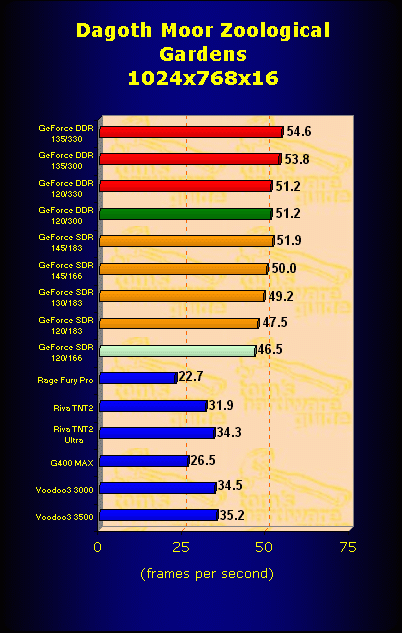Over-clocking the GeForce256
The Benchmark Results - DMZG 16 Bit
This technology demo from WXP is a DX7-game using GeForce's integrated T&L. It comes with a very high depth complexity and high polygon counts and it can be run at 32 bit color. The high depth complexity requires a high fill rate, because many scene-objects are rendered but not displayed, which means that a lot more than the actual visible pixels have to be rendered for each frame. Only Vidoelogic's PowerVR-technology is not sensitive to this issue.
Explaining these results is not too easy. GeForce w/DDR is clearly faster than its brother equipped with SDR, but increasing GeForce's core clock is improving the frame rate scores as well. All that we can say is that the scores in this benchmark seem to be influenced by memory bandwidth, by the speed of the rendering pipeline and possibly by T&L-speed as well, all at the same time.
These results are still rather complex, but it becomes more obvious that memory bandwidth is more of a limiting factor than core speed.
Get Tom's Hardware's best news and in-depth reviews, straight to your inbox.
Current page: The Benchmark Results - DMZG 16 Bit
Prev Page The Benchmark Results - Quake Arena - High Quality (32 Bit) Next Page The Benchmark Results - DMZG 32 Bit
